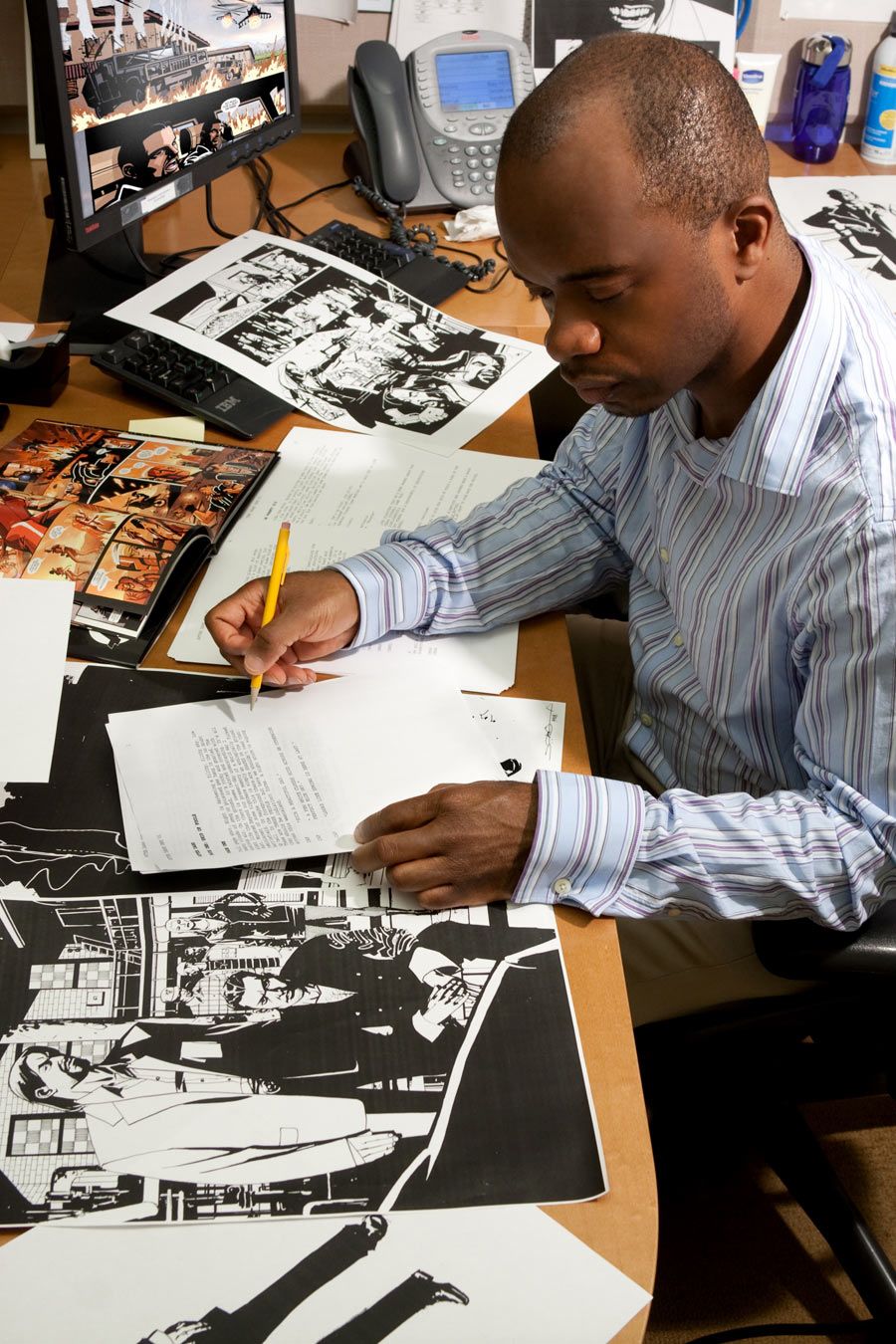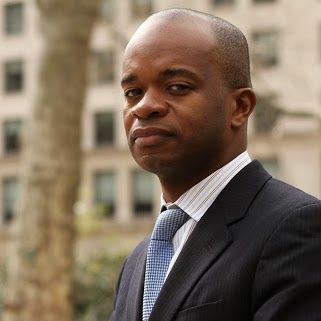At the age of twenty, I read a book that opened my eyes to the possibilities of transformation, of self as well as the world.
"The Autobiography of Malcolm X, As Told to Alex Haley."
Some years later, I became an editor at Milestone Media, Inc., the first Black-owned mainstream comic book company. Founded by Denys Cowan, Dwayne McDuffie, Derek T. Dingle, Michael Davis and Christopher Priest, Milestone released its first comic books in 1993. It was nothing less than a historic achievement.
Five Black men started a comic book company that, in an unprecedented deal with one of the top comic book publishers in the world, produced a line of monthly comics depicting a multicultural universe of heroes from different socio-economic backgrounds. The books were produced by men and women of various nationalities, ethnicities, cultures and sexual orientation. Before Milestone, no other comic book company at the time could boast the same percentage of Black, Latino and Asian characters and creators.
Milestone helped make an impact on the mainstream comic book and animation industries, one that created ripples far and wide into the future. As a result, there were more creators of color in the business working at the top two comic book publishing houses, and I became the first Black member of the Batman Editorial Group at DC Comics. I worked with some of the smartest and most open-minded men in the business to fearlessly increase the level of cultural diversity in the fictional Batman world and in the creative pool of the Batman line of books. Additionally, the Milestone characters went on to appear in two critically-acclaimed cartoon shows, "Static Shock" and "Young Justice."
All because the founders of Milestone went beyond their frustrations and transformed the argument, from "Why are there not enough of us here?" to "We're doing it, so what's your excuse?"
Last year was the twentieth anniversary of Milestone Media's comic book line.
Now, twenty-one years after the first Milestone comics were published, there are more characters of color in mainstream comics, and more illustrators of different ethnicities and backgrounds -- but only a minimal number of writers of color.
There are less writers of color in the combined creative pool of the top two publishers of comic books then there were at Milestone in 1993.
Throughout the hiring ups and downs at the two major publishers which have resulted in this unfortunate disparity, many creators of color have discussed the matter, in secret and in public, online and in print, with either discretion or righteous frustration.
A number of them have chosen to work in the independent circles of the comic book industry, whether for a publisher or by way of their own company, to transform the landscape, to transform the arguments to agendas, to create that which they need to see in the world instead of pleading with others to provide them with fiction inclusive of culturally-diverse heroes.
Since comic books are now pop culture instead of fringe culture, it is more imperative for the full range of heroes to be shown in the comic books and graphic novels serving as the source material for Hollywood films and small-screen shows.
The presence, or exclusion, of writers of color from the comic books and graphic novels will affect the presence, or exclusion, of writers of color involved (to some degree) in the multimedia translations of the intellectual properties released in theaters and shown in homes worldwide.
When Jonah Weiland, the Executive Producer of this site, contacted me to head up a month-long celebration and discussion about diversity during Black History Month, a number of ideas came out of our meetings, but two of the most significant were these:
This is going to be a message of hope.
The discussion of diversity will encompass other groups in addition to Black creators.
Our goal is to provide a space in which we can contribute to the transformation of the discussion, to look at the past but focus on how it helped, and continues to inspire, today's creators to produce new works, generate new ideas, and prepare for new entrepreneurial endeavors.
The discussion will include people from within and outside of the comic book industry, because comic books are one of the major food groups for global entertainment, touching many people's lives through licensing and the indelible nature of nostalgia.
Your involvement in the discussion will help determine its impact.
Some of you may think the name of this "section within a site" has a negative connotation. The word "barrier" speaks to keeping something out or keeping something in, so it doesn't apply to a mass discussion about inclusion and equality.
To which I say, "This is comic books. This is genre fiction. This is pop culture."
The worlds we create and admire, inspiring others to go beyond their self-conceived limitations, are not bound by physics.
We break through barriers of time and space every week.
We break through barriers of other people's perceptions of us every day.
Barriers challenge and dare us to pierce their membranes and travel to other environments, some welcoming and others dangerous.
So here we go.
This is THE COLOR BARRIER.
Come back, and cross through to the other side.
After all, Luke Cage is leaving Harlem.
We need to talk about that.
Joseph Phillip Illidge
Editorial Director
Joseph Phillip Illidge is the Head Writer for Verge Entertainment (www.verge.tv), a production company co-founded withShawn Martinbrough, artist for the graphic novel series "Thief of Thieves"by "The Walking Dead" creator Robert Kirkman, and videogame developerMilo Stone. Verge has developed an extensive library of intellectual properties for transmedia development. Live-action and animated television and film, videogames, graphic novels, and web-based entertainment.
Joseph has been a public speaker on the subjects of race, comics, and politics at Digital Book World's forum, Digitize Your Career: Marketing and Editing 2.0, Skidmore College, Purdue University, on the panel "Diversity in Comics: Race, Ethnicity, Gender and Sexual Orientation in American Comic Books," and at the Soho Gallery for Digital in New York City.
His latest project is "The Ren," a 200-page graphic novel about the romance between a young musician from the South and a Harlem-born dancer in 1925, set against the backdrop of a crime war and spotlighting the relationship between art and the underworld."The Ren" will be published by First Second Books, a division of Macmillan.



